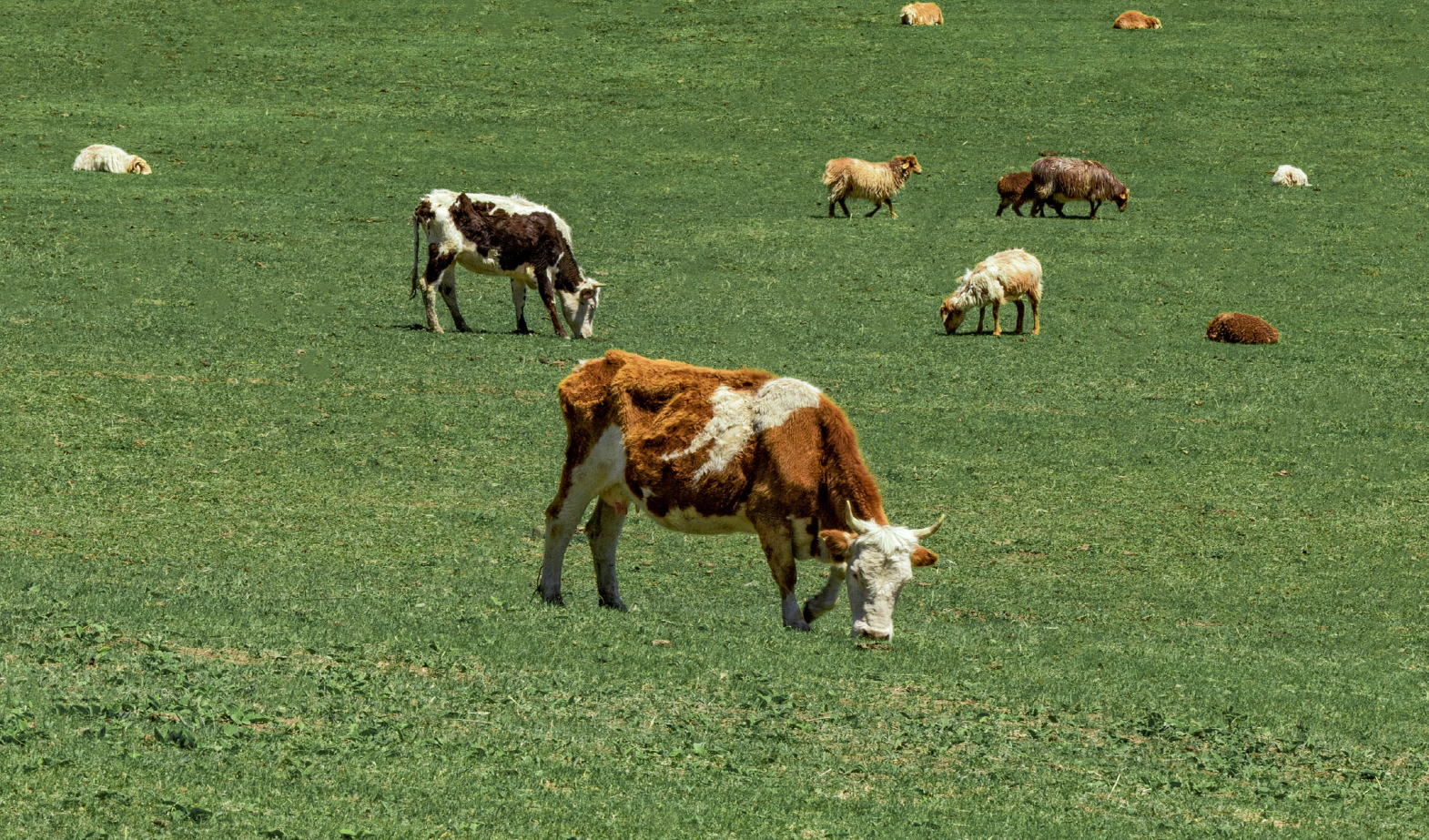The Biochar Cascade in Agriculture
Remark: The references mentioned in square brackets [ ] relate to the references used in the scientific report of dr. Arnold on the Biochar Calculator. You will find these references under References. The text is an excerpt of the scientific report.
The “Biochar-Cascade” is a biochar application method developed during the past years. It is showing the best results in carbon farming, meaning the change of a farm of being a cause of global warming to becoming an environmental solution provider. The Biochar Cascade describes a “ladder” of steps of nutrient and residuals conversion from stable to soil.
Feed Biochar
The first step starts with biochar being fed to livestock as feed additive. The manure from livestock fed with biochar contains biochar and is less liquid. It has the following advantages for the farmer:
- A significant improvement of animal health.
- A reduction of animal mortality.
- A reduction of costs of veterinarians and pharmaceutics.
- An improvement of animal welfare in agriculture.
- Increased daily weight gains of livestock production yields (for swine: up to 17.5%, for cattle up to 25%).
- A higher producer price of meat due to increased meat quality.
- An increase of milk production and quality for dairy cows.
- A significant reduction of greenhouse gas emissions.
The second step of the Biochar Cascade is biochar added as stable bedding, slurry and manure additive, which causes
- A dramatic reduction of odor nuisance. It is the pure smell of methane gas, which takes about 1 hour to be absorbed after the biochar treatment of slurry. Thereafter, there is no more odor nuisance.
- A fixation of a large part of nitrogen and phosphorous in slurry, manure and soil (i.e. preventing of emissions into the air and ground-water).
- A significant strengthening of the fertilization benefits of slurry and manure.
- The biochar acts as long-term battery of bio-nitrogen leading to continuous soil/humus improvement and creates an effective carbon sink.
- A significant mitigation of nitrate and GHG emissions.
- There is smaller farmland area needed for slurry and manure output of livestock.
- Reduces as stable bedding hoof diseases.
The third step of the Biochar Cascade is when the biochar enriched manure is used as soil amendment. Advantages are
- Increased growth of soil organic matter, soil improvement and humus development.
- As a consequence, crop yields are increased due to a higher soil fertility.
- Reducing the potential need of for mineral fertilizers.
- Improved soil resilience against droughts dure to improved water retention capacity
- Saving potential irrigation water consumption (up to 50%).
- Significant carbon capture and removal through this potential carbon sink in farmland.
- This carbon sink can be certified and financially compensated via carbon offset trading.
If the full biochar cascade use is implemented in agriculture, the role of farms in climate protection changes significantly: “Farms would thus change from CO2 emitters to carbon sequestrators, meaning, farmers would significantly contribute to reduce global warming. In addition to its role as a producer of food, fodder and fiber, agriculture would become a climate service provider, meaning farmers would become climate farmers. Agriculture is the key to achieving the 2°C target of the Paris Climate Agreement, because only agriculture and forestry can provide relevant CO2 removal from the atmosphere (negative emissions) in the short to medium term.” (Quote from [ 147 ]).
The US Biochar Initiative (USBI) refers to collaborative research between the Swiss Ithaka Institute, the Rochester Institute of Technology and Cornell University, focused on cascading uses of biochar, which showed promising results. USBI states:
“In the first phase of this collaboration biochar was used to filter whey from a tofu manufacturing plant. The second phase was aimed at determining the impact filtered char would have on plant growth in lettuce, basil and tomatoes. Positive results were seen in the initial plant trials. Filtered char increased the fresh weight of lettuce (38% increase over control …) and basil (62% increase …). The filtered biochar also performed better than a commercially available char (13.8% increase for lettuce … and 38% for basil …). Tomato trials were also conducted …. the number of fruits from filtered char increased substantially over controls (104% … to 128% … and over the commercially available biochar 59% … to 84%).”


